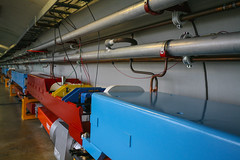USB-C Connector on USB 2 Audio Interface
 Upgrading to a new Apple computer (2017 27-inch iMac) involved facing the fact that FireWire is truly ancient technology. I had already been linking my FireWire 400 Focusrite Saffire interface into my 2010 Mac Book Pro using a FireWire 400 -> FireWire 800 cable. Now to plug into a Thunderbolt 3 / USB-C port on the iMac, I am routing from FireWire 400 to FireWire 800 to Thunderbolt 2 to Thunderbolt 3… Amazingly, it works! But it does leave me contemplating an audio interface upgrade.
Upgrading to a new Apple computer (2017 27-inch iMac) involved facing the fact that FireWire is truly ancient technology. I had already been linking my FireWire 400 Focusrite Saffire interface into my 2010 Mac Book Pro using a FireWire 400 -> FireWire 800 cable. Now to plug into a Thunderbolt 3 / USB-C port on the iMac, I am routing from FireWire 400 to FireWire 800 to Thunderbolt 2 to Thunderbolt 3… Amazingly, it works! But it does leave me contemplating an audio interface upgrade.
Thus I was interested in a recent product announcement from Focusrite, a new Clarett audio interface that was touted as working with USB-C. This would plug directly into the iMac with no adapters, and USB-C is markedly faster than either FireWire 400 or FireWire 800, with a maximum theoretical bandwidth of 10Gbps. However, further research on the Focusrite website shows that the new Clarett USB interface is USB-C in connector only; maintaining backwards compatibility with USB 2.0 through an adapter cable, it operates at a USB 2.0 bandwidth level.
The Clarett USB interface seems to have a useful market for people still using USB 2.0 connectors but wanting to future-proof themselves with USB-C connectors. USB 2.0 is slightly faster than FireWire 400 on the Saffire interface, but if buying a new interface today, for a brand new computer, it seems like a better option to go for a unit that supports faster bandwidth.
I’ll be watching for a true USB-C audio interface, but maybe Dante over Ethernet is the way to go…
[UPDATE: I could try to cover up my ignorance by claiming that I’m really more of a software person than hardware — which is true — but apparently bandwidth isn’t the main attribute to consider here. USB 2.0 bandwidth is plenty for over a dozen audio tracks simultaneously in and out of the computer system. If you need lots of tracks, extra bandwidth can help, but otherwise, it would make no difference. What can make a difference is the speed at which the data gets into the computer; in the computer audio world, the term is latency. USB 3.0 does not improve latency speed over USB 2.0. Thunderbolt, however, does; on the computer end, a Thunderbolt connection gets closer to being an internal bus connection, and thus can deliver that same bandwidth (or more) at a higher velocity. Since the difference occurs on the computer side, not on the interface side or along the cable, a USB-C connector that goes into a Thunderbolt 3 port might offer that latency improvement as well? A whole Thunderbolt chain definitely should!]